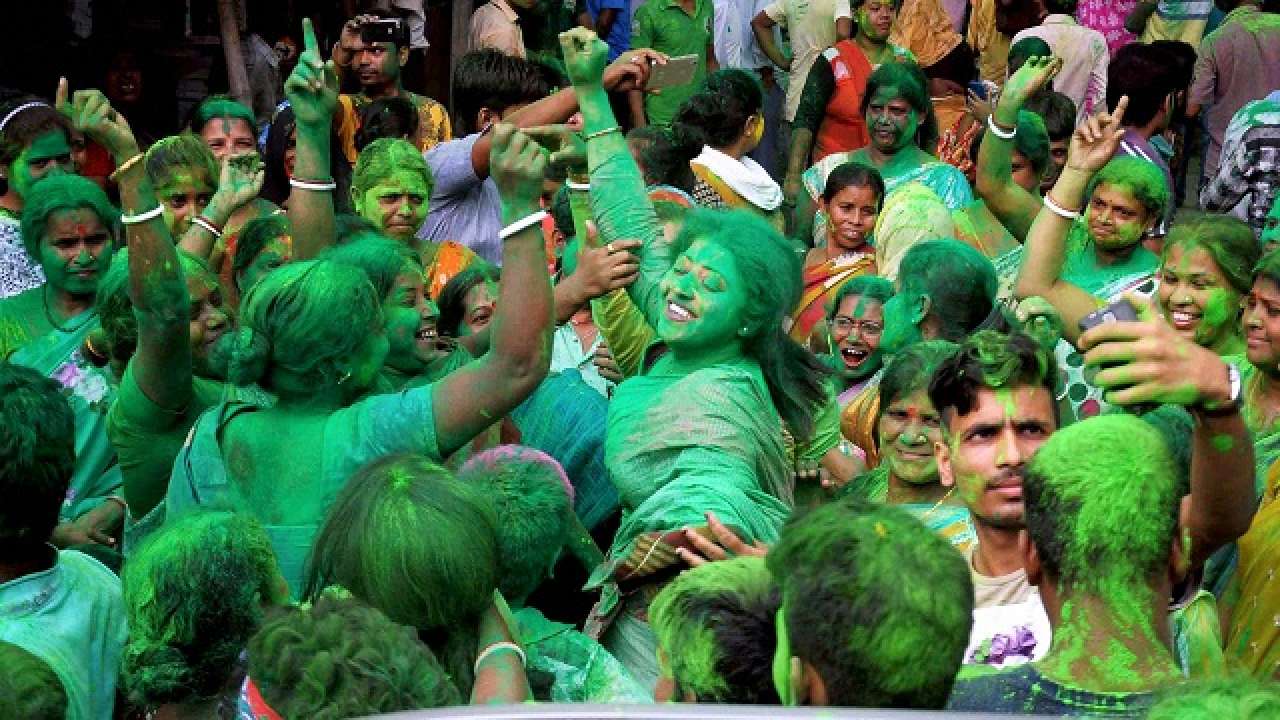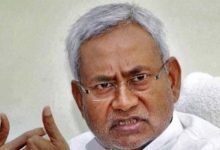The ruling Trinamool Congress (TMC) won the by-elections in the Uluberia (Lok Sabha) and the Noapara (Assembly) seats comfortably, as the gap between it and other contenders continued to widen in the popularity stakes. Here’s a report, for Different Truths.
In West Bengal, the political nightmare for the Opposition parties shows no signs of ending anytime. As expected, the ruling Trinamool Congress (TMC) won the by-elections in the Uluberia (Lok Sabha) and the Noapara (Assembly) seats comfortably, as the gap between it and other contenders continued to widen in the popularity stakes.
Not surprisingly, both the CPI(M)-led Left Front and the Congress ended up as sore losers, unable to check their apparently relentless decline. In both seats, Congress candidates forfeited their security deposits. The Bharatiya Janata Party (BJP) did not have much to cheer either, but coming second in both seats, its candidates made a significant point.
In Uluberia, Sajeda Ahmed, the widow of TMC minister Sultan Ahmed, won by an impressive margin of 4,74,201 votes, defeating her nearest challenger Anupam Mullick (BJP), who polled 2,93,018 votes. CPI(M) candidate Sabiruddin Molah secured 1,38,592 votes, while Husain Warsi of the Congress got 23,109 votes.
In Noapara, Sunil Singh (TMC) won by 63,018 votes defeating runner-up Sandip Banerjee (BJP) The Congress candidate’s poor showing raised questions about the survival of the party, which had won in Noapara in 2016. The late Madhusudan Ghosh had narrowly defeated Manju Bose of the TMC by nearly 1000 votes but more importantly, he had secured 79,548 votes – a figure which dramatically exposed the rapid marginalisation of the Congress!
Though Singh won comfortably, the TMC could barely increase its overall vote share in seven years in Noapara, apparently. In 2011, when Bose had won for the TMC at Noapara, she polled 1,00,369 votes.
While Chatterjee (CPI-M) and Basu (Cong) virtually conducted their campaigns with very little organisational help, Banerjee (BJP) fought with the handicap of having been nominated late as his party’s candidate, following a misunderstanding within the party. This certainly cost the BJP dear.
Senior BJP leaders admitted that they had written off the seat. However, since Banerjee still managed to win more votes than the potentially stronger Left candidate and come in second, it indicated that a better campaign would have ensured more votes for the saffron party.
 The TMC’s performance in Uluberia was impressive in that Ahmed won almost 2,00,000 votes more than her husband had tallied in 2014 LS polls, winning the seat. However, here too, the BJP’s showing was a cause for concern. In 2014, the BJP had won only 1,38,592 votes as against the TMC’s 5,70,785 votes. One reason was the communal polarisation in 2018 by-election. Except for the BJP, the three other parties had all put up Muslim candidates in view of the large Muslim population. The BJP counted on a Hindu consolidation as a counter, especially after there were communal disturbances in the Dhulagarhi pocket of the constituency and apparently it paid off.
The TMC’s performance in Uluberia was impressive in that Ahmed won almost 2,00,000 votes more than her husband had tallied in 2014 LS polls, winning the seat. However, here too, the BJP’s showing was a cause for concern. In 2014, the BJP had won only 1,38,592 votes as against the TMC’s 5,70,785 votes. One reason was the communal polarisation in 2018 by-election. Except for the BJP, the three other parties had all put up Muslim candidates in view of the large Muslim population. The BJP counted on a Hindu consolidation as a counter, especially after there were communal disturbances in the Dhulagarhi pocket of the constituency and apparently it paid off.
In Uluberia again, the political future of the CPI(M)-led Left forces and the Congress seems to be bleak. In 2014, the CPI(M) had secured 3,69,563 votes, putting up a respectable fight, while the Congress garnered 67,826 votes.
From the 2011 West Bengal Assembly elections onwards, the share of TMC votes, prior to these by-elections, had risen by 5.97%, and the BJPs increase, at 5.92%, had matched it. Interestingly, while the Congress actually increased its votes between 2011 and 2016, the Left share fell steeply by 14.13%.
All three opposition parties for the record accuse the ruling TMC of ruthlessly using the state administration, the police and armed anti-socials, not only to attack and intimidate their activists but of systematically curtailing their movements on the polling day. All parties complained to the State Election Commission alleging that their activists could not even man all the polling stations, but to no avail.
No wonder both the state Congress and the Bengal CPI(M) unit have been pressing for some kind of an electoral alliance, on the basis of an anti-communal agenda, to combat both the TMC and the BJP. There is no doubt that the results of these by-elections would only revive such a demand. However, the majority opinion within the CPI(M), much to the chagrin of both the state CPI(M) and the Congress, rejected the suggestion. Interestingly, the state CPI is more amenable to the idea of setting up a larger anti-communal platform comprising the Left parties, the Congress, and other forces.
It is expected that Bengal CPI(M) leaders, favouring a larger tie-up with other secular forces, would relaunch a fresh campaign to make sure that the issue is discussed again at the coming Party Congress.
Meanwhile, the TMC makes no bones that the present division of Opposition votes helps its cause. As TMC minister Subrata Mukherjee says, “The BJP’s emergence as a political factor is a godsend for us,” implying that it would mean the end of the road for the state Congress and CPI(M) units for now.
Ashis Biswas
©IPA Service
Photos from the Internet
#Congress #CPIM #BJP #TMC #Opposition #ElectionWin #LokSabha #AssemblyPolls #Bengal #IPA #DifferentTruths





 By
By
 By
By

 By
By